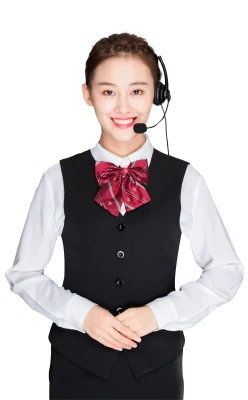HDMI signal transmission:How to pick an HDMI
June 19,2025
RF modulator and RF cable

Snow on hotel TVs? 4K freezing in classrooms? Check your coaxial cables first. Modulators rarely fail—but inadequate cables frequently cause these symptoms.
It’s like the “blood vessels” of signal transmission; once it “clogs,” no matter how strong the heart (RF modulator) is, the system will crash.
As HDMI 2.1 and 2.2 become more popular in 2025, the need for more stable and faster video transmission will grow.
Choosing the right HDMI modulator and RF cable combination delivers both stable long-distance transmission and preserved AV quality.
1.Why is the modulator the "heart" of the device?
The main job of the HDMI RF modulator is to convert and send signals.
HDMI modulators convert digital signals to RF for coaxial transmission, extending HDMI beyond copper cable limits while preserving signal integrity over distance.HDMI modulators convert digital AV signals (e.g., from set-top boxes) into broadcast-ready RF signals. These travel through coaxial networks to multiple TVs simultaneously. For instance:
A hospital uses a 16-channel modulator like the FY-LTZQ1601B to distribute health programs. Patients simply tune to designated channels—no individual playback devices required per TV.
Key Values:
- Multi-Source Distribution:A single modulator supports 4-24 signal inputs (e.g. W3228BT handles 24 HDMI+IP mixed sources), enabling hotel/school-wide HD distribution;
- Legacy TV Compatibility: Modulators with 1080P inputallow RF-only TVs to display HD signals without hardware replacement;
- Cost reduction: 60% less equipment costs than deploying many players.

2.Five important technical parameters to look at when buying
(1)Video quality: the life line of resolution and encoding
resolution and refresh rate must match
The version of HDMI sets the limit:
- HDMI 1.4 only works with 4K@30Hz and has a bandwidth of 10.2Gbps, so it is good for basic monitoring systems.
- HDMI 2.0 supports 4K@60Hz (bandwidth 18Gbps) and is the most popular choice for hotels and schools.
HDMI 2.1 supports 4K@120Hz/8K@60Hz (bandwidth 48Gbps) and works with high-end gaming consoles like the PS5 or VR headsets.
If your end device only supports 1080P, choosing a 4K modulator (like the SKD3019) will waste resources.
Efficiency of encoding and quality of image:
- H.264: Works with a lot of different formats and is good for low-bitrate 1080P transmission (5–8Mbps);
- H.265: 50% more compression, 4K transmission is a must (bitrate can be adjusted from 1 to 13 Mbps).
Key picture quality parameters:
MER (Modulation Error Rate) ≥40dB (DTMB national standard). Below this threshold, macroblocking artifacts become visible. High-performance models like the FY-LTZQ1601B achieve 42dB MER;differential gain DG≤8%, differential phase DP≤8 degrees to prevent color distortion.

Comparing the main features of different versions of HDMI modulators:
| HDMI Version | Bandwidth | Supported Resolutions | Latency Level | EMI Resistance | Application Scenarios |
|---|---|---|---|---|---|
| HDMI 1.4 | 10.2 Gbps | 4K@30Hz, 1080p@120Hz | Medium | Average | Legacy home theaters, older devices |
| HDMI 2.0 | 18 Gbps | 4K@60Hz, 1080p@240Hz | Low | Better | Modern home theaters, premium displays |
| HDMI 2.1 | 48 Gbps | 4K@120Hz, 8K@30Hz | Ultra-Low | Excellent | Gaming, professional video editing, next-gen devices |
| HDMI 2.2 | 96 Gbps | 4K@240Hz, 10K@120Hz | Ultra-Low | Excellent | Ultra HD video, VR/AR, professional studios |
mage quality hard indicators
- MER (Modulation Error Rate) ≥ 40dB:if it is lower than this, there will be a lot of “mosaic” (DTMB national standard);
- Differential Gain/Phase (DG/DP) ≤ 8%: Prevents color distortion.
| Device Type | Recommended Version | Key Reasons |
|---|---|---|
| 4K TV/Projector | HDMI 2.0 | 60Hz refresh rate meets requirements for movies and documentaries |
| PS5/Xbox Game Console | HDMI 2.1 | 120Hz anti-tearing + ALLM low-latency technology |
| VR Headset/10K Display | HDMI 2.2 | Supports 10K@120Hz future-proofing |
(2)Type of channel: determines the capacity of the device and the scene
Channel quantity selection
| Channel Type | Application Scenario | Representative Model |
|---|---|---|
| Single-channel | Homes/Small meeting rooms | Hangtian Pearl River Single Modulator |
| Multi-channel (8~16) | Hotels/Schools | FY-LTZQ1601B |
| Hybrid Type (24+) | Large venues | W3228BT (HDMI+IP Input Supported) |
Modulation standard matching
- China:mandatory DTMB (GB20600-2006) standard;
- European and U.S. markets: DVB-C (cable) and DVB-T (terrestrial) standards. Hotel systems must maintain international signal compatibility using these protocols.
(3)RF performance: signal coverage and anti-interference ability
Key Parameters
- Relationship between output level and distance:
| Transmission Distance | Required Output Level | Representative Model |
|---|---|---|
| <50m50m> | ≥70dBμV | HangtianPearl River Single-channel Modulator |
| 50~200m | ≥90dBμV | FY-LTZQ1601B (16-channel) |
| >200m | ≥115dBμV | W3228BT (Engineering-grade) |
Anti-interference capability
- Frequency change: adjustable from 47 to 1000 MHz (to avoid interference from broadcasting);
- out-of-band suppression: ≥60 dB effectively blocks adjacent channel interference, especially critical in EMI-heavy environments like elevator motor installations.
Bandwidth optimization technology:
- 5–7.0Msps symbol rate (high symbol rate supports 256QAM, which increases data capacity);
- dynamic code rate adjustment (1–19.5Mbps) to adapt to network fluctuations.
(4)Design for heat dissipation: the key to industrial-grade reliability
Cooling solution:
- Closed cabinet:choose multiple fans for redundant cooling (such as the 5-fan design of the SKD30 platform);
- 1U thin and light model:ventilation space must be reserved (such as SKD19).
Temperature control range:
- Working temperature -10℃~45℃ (essential for hotel computer rooms);
- Storage temperature -40℃~80℃ (adaptability to extreme environments).
(5)Choosing the right cable: matching the "blood vessels" of the
model’s transmission
Cable and modulator coordination table
model’s transmission
Cable and modulator coordination table
| Cable Type | Attenuation (@750MHz) | Max Distance | Min Modulator Output Level | Transmission Loss Calculation |
|---|---|---|---|---|
| RG59 | 22dB/100m | <50m50m> | ≥70dBμV | -11.0dB @50m |
| SYV-75-5 | 16dB/100m | 50~200m | ≥90dBμV | -16.0dB @100m |
| LMR-400 + Adapter | 6.2dB/100m | 200~500m | ≥105dBμV | -31.0dB @500m |
Avoiding pitfalls:
- 75Ω modulator incorrectly connects to 50Ω line (like LMR-400), causing 30% signal reflection! An impedance converter is needed;
- Double-layer aluminumfoil bonded with copper mesh provides ≥90dB EMI shielding, effectively mitigating multi-source electromagnetic interference in critical applications.
(6)Scenario-based configuration recommendations
| Scenario | Modulator | Cabling Solution | Thermal Management |
|---|---|---|---|
| 8-floor Hotel Coverage | FY-LTZQ1601B | SYV-75-5 trunk line | 5-fan redundant cooling |
| School Multimedia Classrooms | 8-channel DTMB Modulator | Dual-shielded RG6 + 30m amplifier | Ventilated equipment rack |
| 500m Long-distance Display | W3228BT | LMR-400 + Media Converter | Industrial wide-temperature design |
3.Scenario-based configuration solution: modulator + cable combination

Home use (limited budget)
Modulator:
- AoeSpy HDMI RF Modulator
Supports 1080p, plug and play, compatible with game consoles/set-top boxes.
Cable:
- RG6/U 75Ω coaxial cable (length ≤ 20 meters)
Low cost, meets general home wiring requirements.
Commercial/multi-room distribution
- Modulator:
SatLink ST-7000 or Multicom modulator
Supports 1080p, multi-channel, Web remote management, rack installation.
- Cable:
Low-loss RG6/U + signal amplifier
Add an amplifier every 30 meters for long-distance transmission.
4K ultra-high-definition requirements
- Modulator:
Thor Broadcast HDMI RF Modulator
Supports 4K HDR and Dolby audio. - Cable:
Optical fiber HDMI cable
Ultra-long-distance lossless transmission, but requires an optical fiber modulator.
Pitfall avoidance guide
- Pitfall avoidance guide:
Old TVs must be confirmed to support NTSC-M/PAL, otherwise the modulator cannot output the picture.
Avoid reverse converters: Some devices only support HDMI→RF, which is irreversible. - Signal interference processing:
When multiple modulators coexist, manually stagger the output channels.
Avoid cables close to power lines.
- Installation errors:
The cable bending radius must be greater than 5 times the diameter, otherwise the signal will be attenuated.
The modulator needs heat dissipation space, do not install it in a closed manner.
Product comparison reference table
|
Model |
Resolution |
RF Output |
Key Features |
Application Scenarios |
|---|---|---|---|---|
|
1080p |
70-90dBμV |
Dual-band (VHF/UHF) |
Home gaming setups |
|
|
1080p |
80dBμV |
Dolby audio + Rack mountable |
Premium home theaters |
|
|
4K/1080p |
70-100dBμV |
Plug-and-play + Compact design |
Portable quick-install systems |
|
|
1080p |
- |
Web configuration + ATSC compatible |
Commercial multiscreen displays |
RF modulator-coaxial systems solve traditional HDMI distance limitations, enabling stable long-range video transmission beyond 200 meters.
You can get stable signal transmission with high resolution and low latency by choosing the right combination of modulator and cable.
This will meet the needs of home theaters, games, business displays, and more.
Bonfon Office Building, Longgang District, Shenzhen City, Guangdong Province, China

A China-based OEM/ODM RF communications supplier
Table of Contents
Owning your OEM/ODM/Private Label for Electronic Devices andComponents is now easier than ever.
